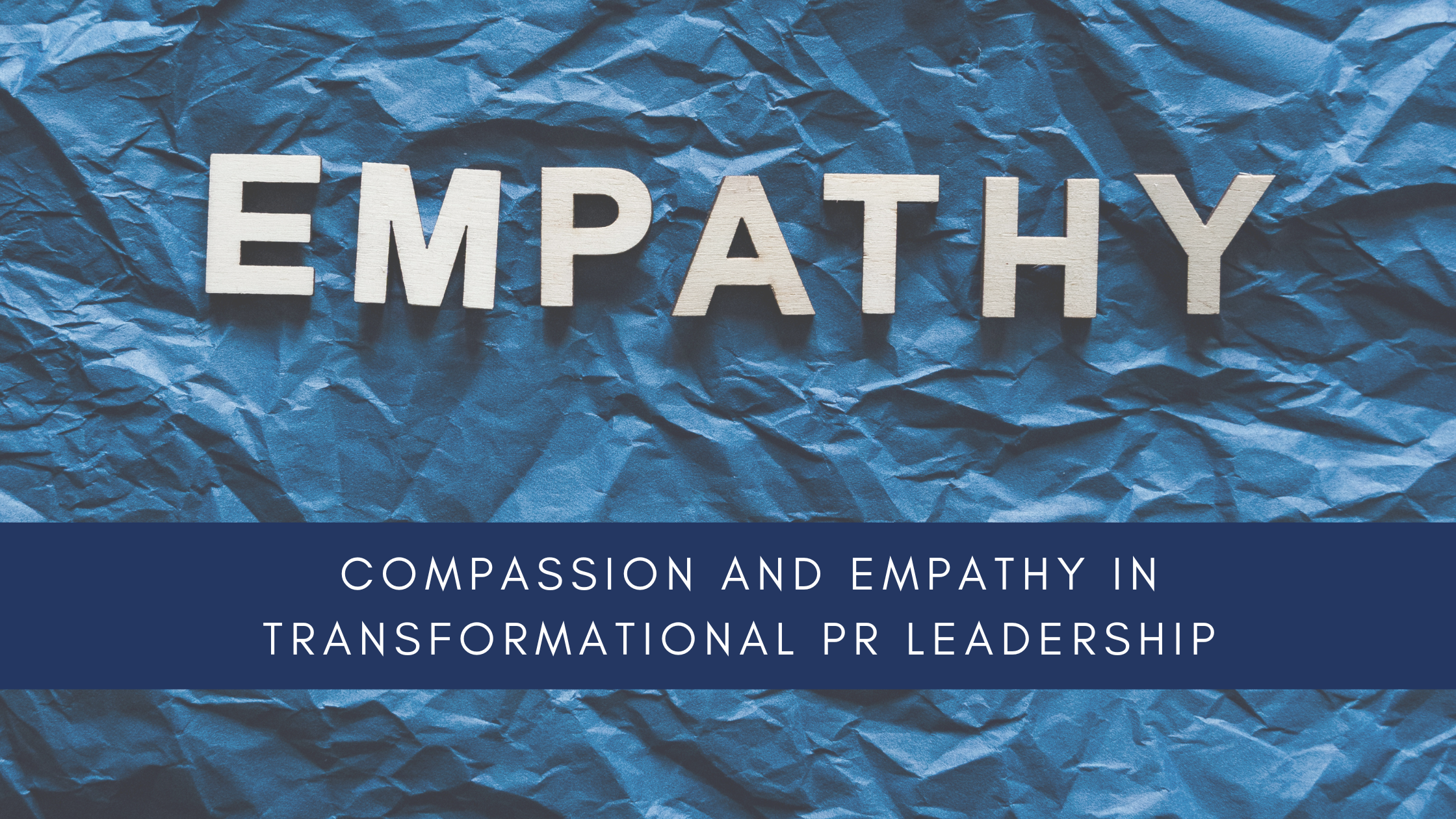When people hear the words transformational leadership, influence, inspiration, and trust might come to mind. Although these are all important to be a transformative leader, two words come to my mind as a communicator that are often understated and overlooked. These two words are empathy and compassion.
Social justice and transformational leadership
Many definitions describe transformational leadership as a form of ethical, inclusive, and influential management. One definition from Wayne State University, defines transformational leadership as, “distinct from other leadership theories because of its inherently normative and critical approach grounded in the values of equity, inclusion, excellence, and social justice.”
Although transformational leadership is the act to influence and encourage, it must include compassion and empathy to be inspirational and transformative. According to Anne Gregory and Paul Willis, authors of Strategic Public Relations Leadership, “Leadership aims to bring people together around a common goal.” When we think of examples of leadership bringing people together to achieve a common idea, it is often rooted in compassion.
A famous example is the inspirational I have a dream speech by Dr. Martin Luther King Jr. Not only was King’s speech powerful, but it was influential in uniting people towards a common goal. The definition above and King’s speech highlight why leadership requires a deep understanding of empathy and compassion to motivate people toward a shared purpose.
Compassionate and empathic PR leadership
Nova Scotia was considered a global leader during the pandemic and engaged in transformational leadership by masking and thinking of one another. Wearing a mask meant protecting people in their community. COVID-19 gave many people a strong sense of empathic understanding that linked them toward a common goal.
One heartful example captured on video of compassionate leadership is of a soccer player who loses her hajib mid-game. In the video, you see the player’s hajib unravel, then without hesitation, the opponents rally around to give her privacy to fix it. Not only was it great sportsmanship, but it was also acting with compassion and humility. Great PR leaders practice compassionate communication even when they gain nothing from it.
PR leaders who understand empathy know leading with compassion transforms organizations, to be honest, and act with integrity, just like the soccer players and Nova Scotians wearing masks during the pandemic. These examples of collective leadership are what many PR leaders try to emulate and practice in the profession.
In business, empathy and compassion are considered “soft skills.” However, Simon Sinek, a motivational speaker talks about these skills as “human skills.” According to a Forbes article, empathy is the most important leadership skill in business. Empathy skills have become more important for PR professionals as we navigate a polarized world. Needless to say, great PR leaders know how to put their human skills at the forefront of their communication.
How empathic and compassionate PR leadership is rooted in ethics
One article, titled Transformational leadership: Practicing what we teach in the management classroom, found that true transformative leadership is ethical. The article referred to this finding as “behavioural integrity” and considers it the best approach to making ethical decisions in leadership. As we know, leaders in management will at some point find themselves in difficult situations. The best transformational leadership comes from having a strong sense of our values and being able to stay grounded in them when it’s time to make tough decisions.
Sinek speaks about transformative leadership in his video, Understanding empathy. Sinek says when companies decide to mass lay off employees there are negative consequences that send a damaging message to people. These situations are often not aligned with the organization’s values and in some situations are not considered ethical behaviour. Sinek argues many of these situations could have been avoided if they practiced more ethical or empathic leadership.
If leaders lead with their ethical morals and less about communicating the “right” message, there would be more compassionate decision-making in business. Sinek further argues ethical business-making is a strategic approach to leadership. It is a way to build trust with employees and lead with humility. Therefore, if transformational leadership is centered around empathy, it becomes compassionate and ethical behaviour that helps organizations achieve their goals.
PR transformative leadership in practice
New Zealand’s Prime Minister Jacinda Ardern, who served from 2017 to 2023, is a perfect example of empathic and transformative leadership. In 2019, 51 people died in the Christchurch Mosque shootings. Following the attacks, Ardern acted with empathy and ethical behaviour by introducing an immediate ban on assault rifles within days of the incident. This decision wasn’t about politics but about communicating an empathic and sincere message to a country in mourning.
Another Forbes article, written by journalist Laurel Donnellan says, “Compassionate leadership is the practice of using your head and heart to inspire and influence people so they can, in turn, inspire, and influence others.” What is different about this definition is the idea of emotion in effective leadership. In a world where everything feels divided, the most powerful tool PR leaders can use is ethical compassion to communicate.
Transformative PR leadership in practice is the idea to empower, inspire, and motivate people with empathy and compassion that requires not only logical thinking but using your heart in decision-making.
Like Martin Luther King Jr. when people are connected to their values and ethics, they are more likely to engage in inspirational and transformational leadership. For PR professionals it is a way to authentically communicate the organization’s mission to inspire people toward a common goal with compassion and empathy.
Written by: Emily Brown
Edited by: Emma McCluskey





